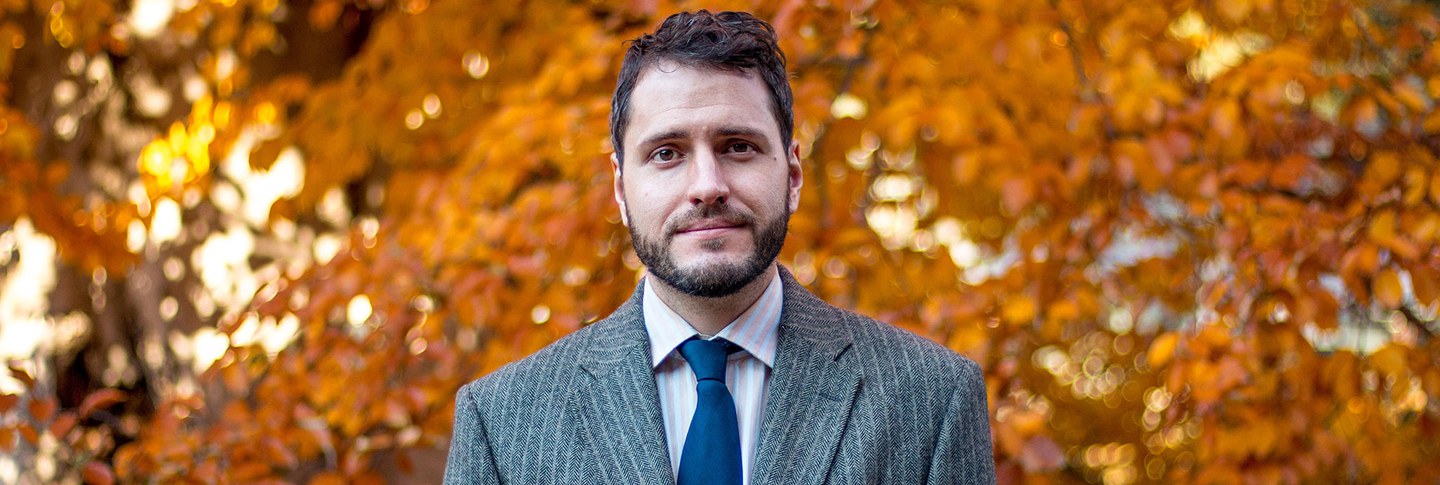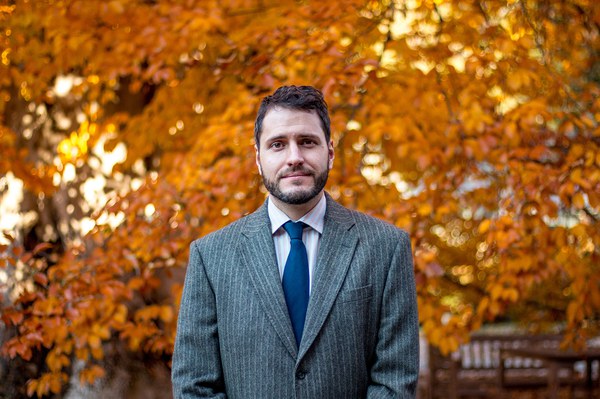Maxime Lamoureux-St-Hilaire, a PhD candidate in anthropology at Tulane University, is a junior fellow in Pre-Columbian Studies. On November 27, he delivered his research report, “Palatial Politics: The Classic Maya Royal Court of La Corona, Guatemala,” which analyzed the significance of the court’s layout and structures.
Q&A with Maxime Lamoureux-St-Hilaire
What’s the importance of understanding how these royal sites functioned on a day-to-day level? Does it have something to say about how the broader society functioned?
If you look at the broader literature on kingship, and if you look at studies of ancient Maya kingship, the point of departure for these studies is more often than not iconography as it appears on things like painted vessels. Mary Miller’s seminal work, for instance, bases its interpretation of the spectacle of the late classic Maya court on images, and what you tend to see in these images is the glamorous side of the court, all the things the kings and their court wanted posterity to remember.
If you think about today and what circulates in the media about political institutions, it’s a similar case. In England they talk about the queen and the marriage of the prince to an actress—so it’s fancy stuff that’s attracting the public’s eye. The same goes for the media here in the United States. You can garner some information by looking at the media and what gets portrayed in public monuments, but you won’t understand how political institutions really work. You’d have to go to Congress for that; you’d have to pay attention to more subtle details.
In my work I’m trying to understand how this court functioned by looking at the different spaces that subdivided this ancient palace and their different functions and, most importantly, how they were articulated with regard to one another.
Briefly discuss the benches you mentioned in your talk, and the various ways they were modified for different purposes.
I’m actually a little uncomfortable with the term bench, it’s sort of an umbrella term. There were a few different types. Among these types, the most common ones I’ve found in the palace are what I would call platform benches. They occupy most of the half of a room, and they were likely used for storing personal belongings and for sleep—so they’re really more beds than benches. They’re made of masonry and stucco, but of course would have been furnished and covered with petates, or mats (which is, incidentally, a symbol of rulership).
Other benches have a built-in backrest; they’re fancier, and I think would have been used for administrative purposes. There’s actually an instance in the palace of a desecrated room, and what they did was destroy the backrest of the bench, to symbolically terminate its administrative functions. Other benches have niches in them that we don’t fully understand, though they probably would have served a ritual purpose.
There are exterior benches as well, some of which unfortunately have been destroyed by looters, that probably incorporated hieroglyphic elements into their backrests. The people sitting on those benches would not only have been important, but they would have been able to engage with the art, reading it, and in doing so associating themselves with the historical past that was inscribed on the monuments.
Is there any connection between the layout of these royal sites and astronomy, or the locations of celestial bodies?
The quick answer to that is no. The longer answer is that there are a lot of calendrical dimensions to Maya rulership. We can date certain monuments with incredibly firm dates, because there’s a perfect correlation between our calendars, so we know they were extremely talented astronomers. Obviously they had a lot of tools to help with this, observatories and such things that can sometimes be associated with palace structures, though that’s not too common.
My whole point is that these palaces were designed by engineers and architects in concert with the politicians of the epoch, and that the different parts of the palaces were put together for pragmatic purposes often related to the economy. While there were certainly some ceremonial structures associated with them, those ceremonies tended to be related more to performance than any cosmic questions. These temples were like political stages, and the kings were performers—they wore elaborate costumes and took part in dances that were meant to recreate mythological events.

